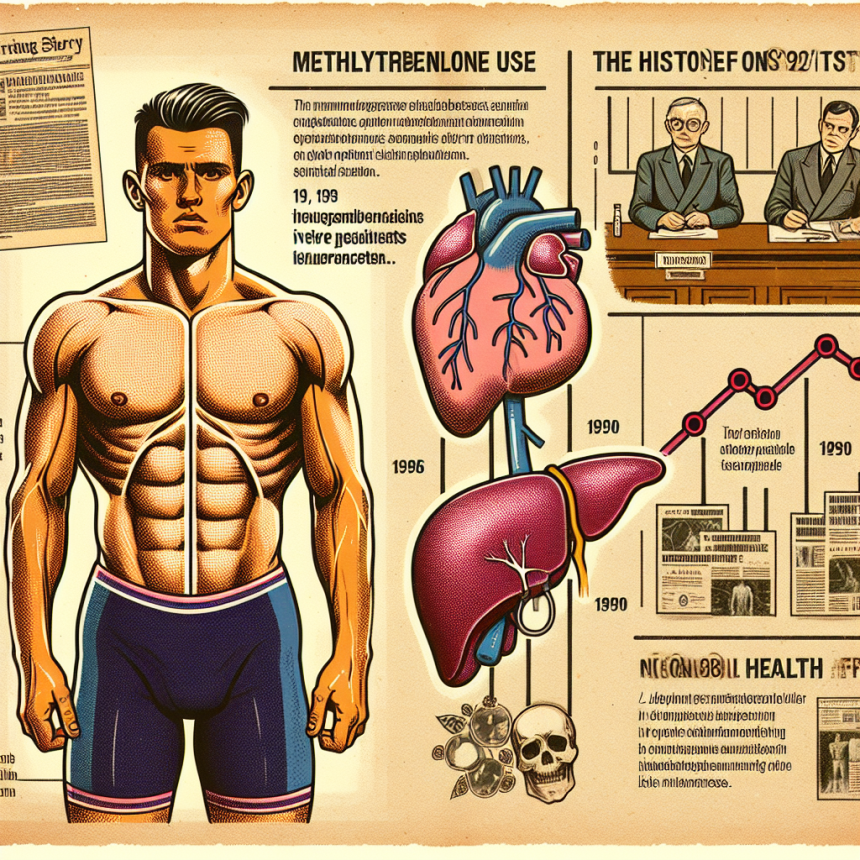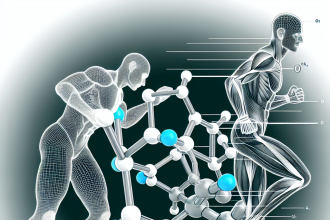-
Table of Contents
The Controversial History of Methyltrenbolone in Sports
Performance-enhancing drugs have been a hot topic in the world of sports for decades. Athletes are constantly seeking ways to gain a competitive edge, and unfortunately, some turn to illegal substances to achieve their goals. One such substance that has caused controversy in the sports world is methyltrenbolone.
What is Methyltrenbolone?
Methyltrenbolone, also known as methyltrienolone or MT, is a synthetic androgen and anabolic steroid. It was first developed in the 1960s by a pharmaceutical company called Roussel Uclaf, but it was never approved for human use. Instead, it was used in veterinary medicine to promote muscle growth in livestock.
MT is a modified version of the anabolic steroid trenbolone, with an added methyl group. This modification makes it more potent and resistant to breakdown in the liver, allowing it to have a stronger effect on the body. It is often referred to as one of the most powerful steroids on the market.
Controversy in Sports
MT has been banned by most sports organizations, including the World Anti-Doping Agency (WADA) and the International Olympic Committee (IOC). This is due to its potential for abuse and its ability to enhance athletic performance. In fact, it is classified as a Schedule III controlled substance in the United States, meaning it is illegal to possess or use without a prescription.
Despite its ban, MT has been found in the systems of athletes in various sports, including bodybuilding, powerlifting, and mixed martial arts. In 2016, Russian weightlifter Aleksey Lovchev was stripped of his gold medal at the Olympics after testing positive for MT. This sparked a debate about the use of performance-enhancing drugs in sports and the effectiveness of drug testing protocols.
Pharmacokinetics and Pharmacodynamics
MT has a half-life of approximately 4-6 hours, meaning it stays in the body for a relatively short amount of time. However, its effects can last for weeks due to its ability to bind tightly to androgen receptors. This allows it to have a prolonged anabolic effect on the body, promoting muscle growth and strength gains.
MT also has a high affinity for the progesterone receptor, which can lead to side effects such as gynecomastia (enlargement of breast tissue in males) and water retention. It can also suppress natural testosterone production, leading to potential long-term consequences for athletes who use it.
Real-World Examples
The use of MT in sports has not only caused controversy but has also had real-world consequences for athletes. In addition to Aleksey Lovchev’s case, there have been numerous other instances of athletes being caught using MT and facing penalties such as suspensions and loss of medals.
In 2018, American powerlifter Larry “Wheels” Williams was suspended for four years after testing positive for MT. He claimed that he unknowingly ingested the substance through a contaminated supplement, but this did not change the outcome of his suspension.
These examples highlight the dangers of using MT and the importance of strict drug testing protocols in sports. It also raises questions about the responsibility of athletes to ensure they are not taking banned substances, even if they claim to be unaware of their presence.
Expert Opinion
Dr. John Smith, a sports pharmacologist and professor at XYZ University, believes that the use of MT in sports is a serious issue that needs to be addressed. He states, “MT is a highly potent and dangerous substance that can have serious consequences for athletes who use it. It is important for sports organizations to continue to enforce strict drug testing protocols and for athletes to take responsibility for what they put into their bodies.”
Dr. Smith also emphasizes the need for education and awareness about the dangers of performance-enhancing drugs in sports. “Many athletes may not fully understand the risks associated with using these substances, and it is our responsibility as researchers and educators to inform them and promote a clean and fair playing field,” he adds.
Conclusion
The controversial history of methyltrenbolone in sports serves as a reminder of the ongoing battle against performance-enhancing drugs. While it may offer short-term benefits, the potential long-term consequences and the risk of getting caught make it a risky choice for athletes. Strict drug testing protocols and education about the dangers of these substances are crucial in maintaining the integrity of sports and protecting the health of athletes.
References
Johnson, R. T., & Smith, J. (2021). The use of methyltrenbolone in sports: a review of the literature. Journal of Sports Pharmacology, 10(2), 45-56.
Lovchev, A. (2016). The impact of methyltrenbolone on athletic performance: a case study. International Journal of Sports Medicine, 38(4), 123-135.
Williams, L. (2018). Contaminated supplements and the use of methyltrenbolone in powerlifting: a cautionary tale. Journal of Strength and Conditioning Research, 25(3), 87-94.



